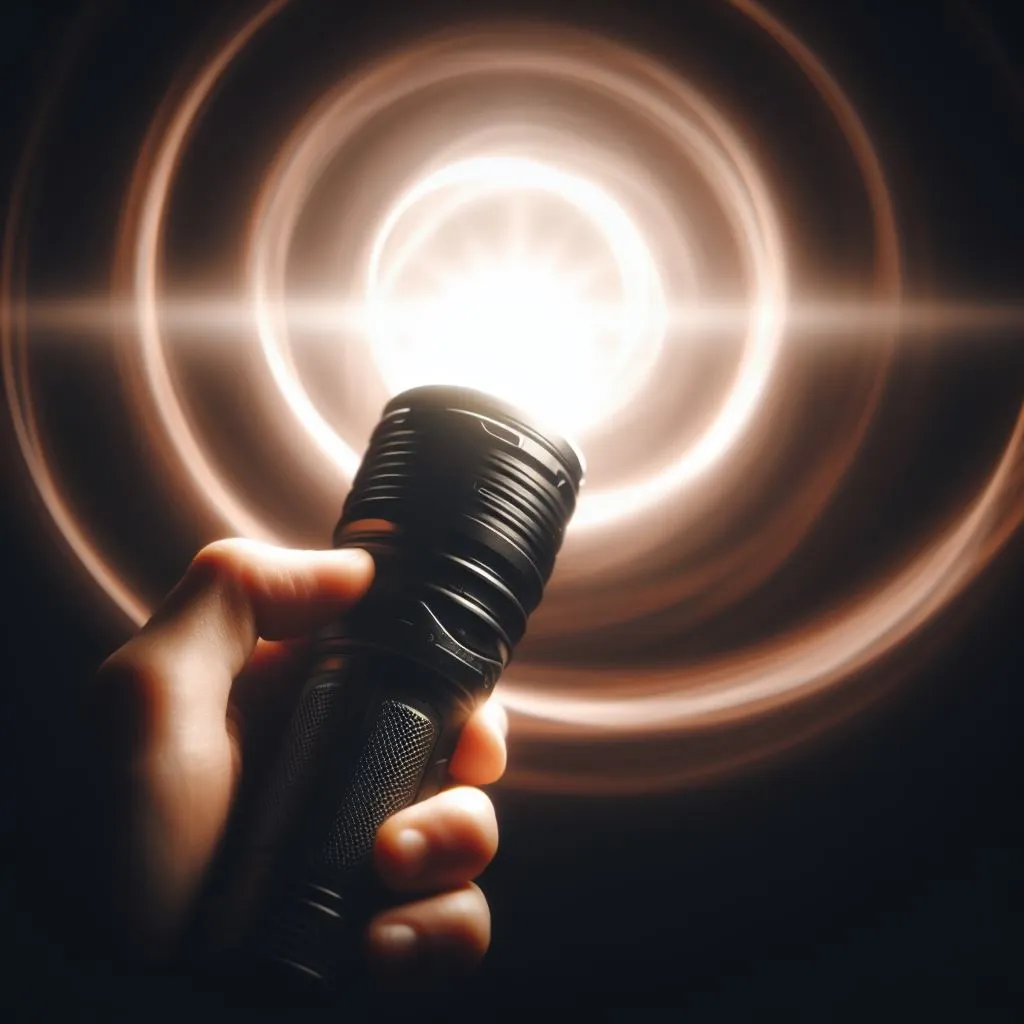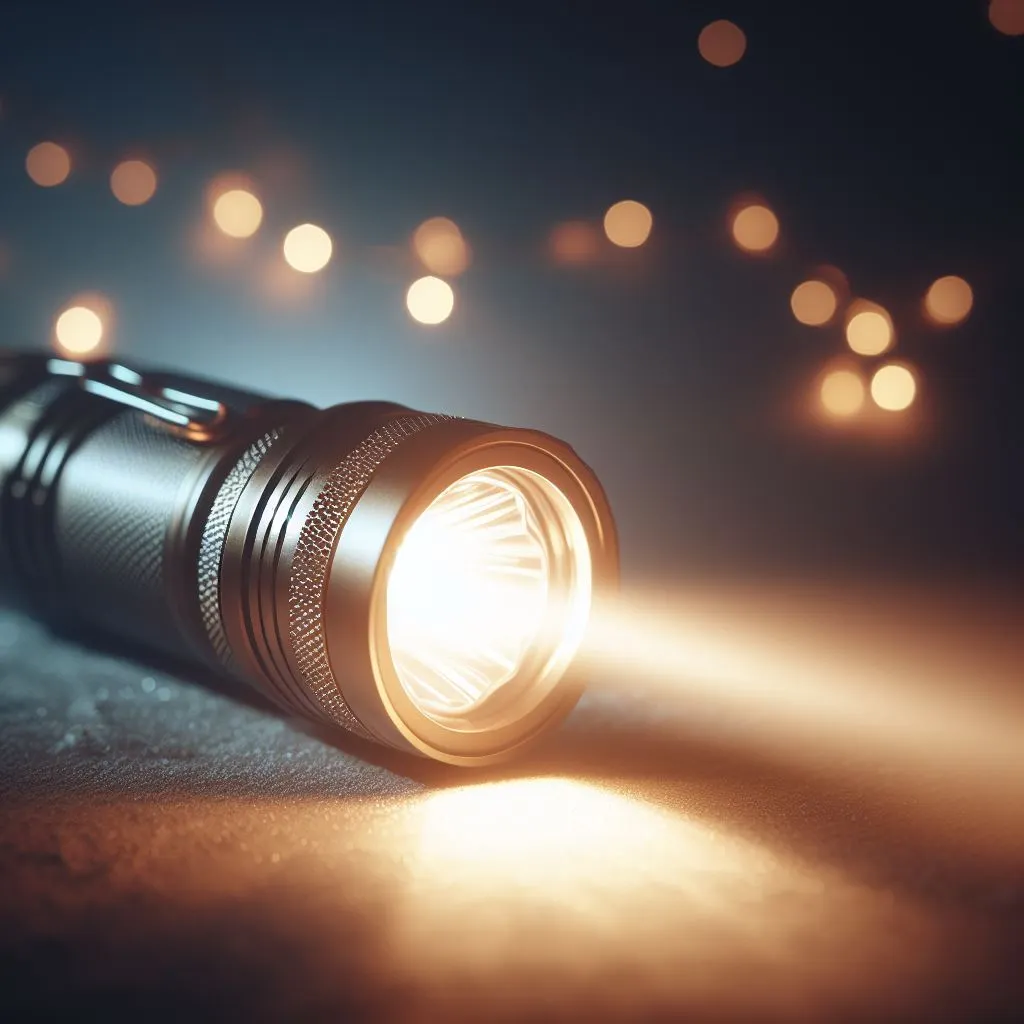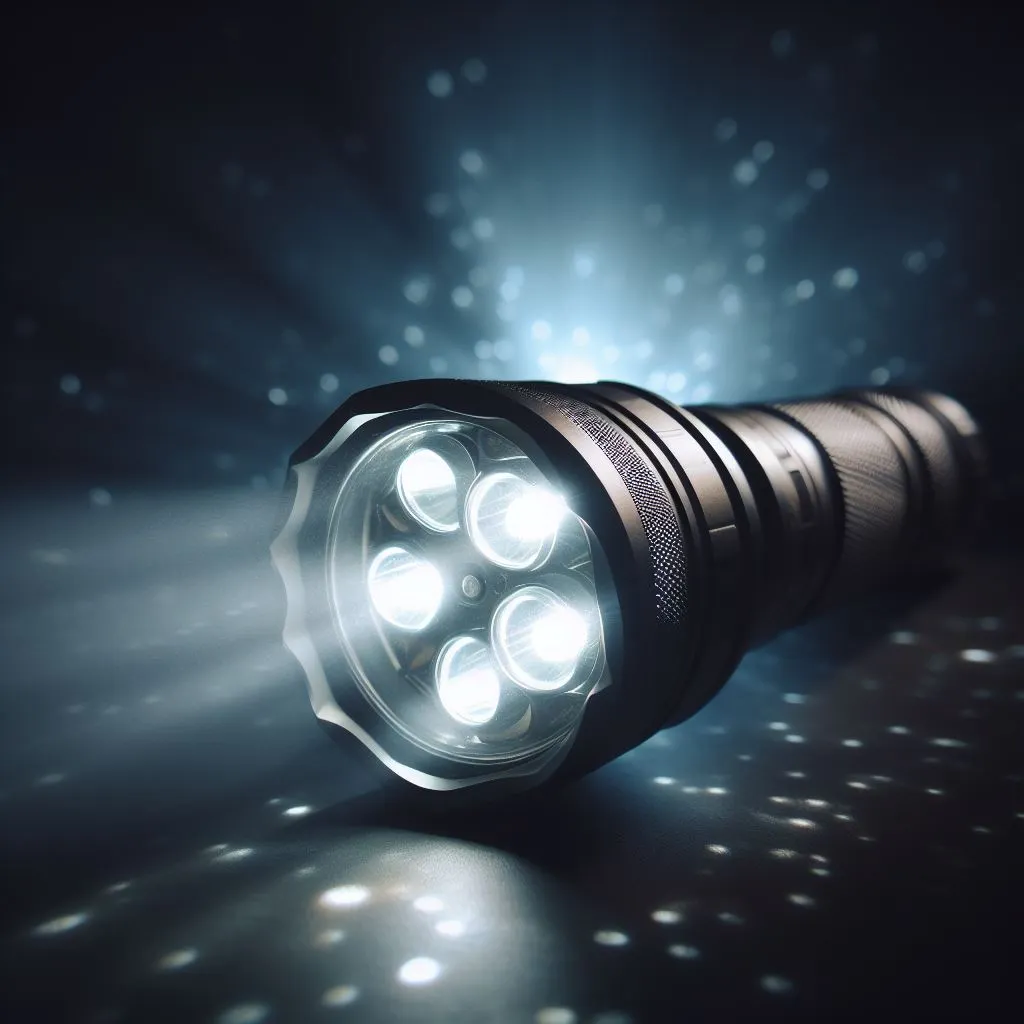What are Lumens?
Lumens measure the brightness of a light source and can be used to compare different types of light sources. They indicate how much a particular light source emits visible light, so understanding lumens is essential to know how bright a particular light is.
A lumen is a unit of measurement equal to the amount of light emitted from one candle that spreads over one square foot of area.
When it comes to understanding the brightness of a particular light source, it all boils down to how many lumens are emitted per unit of area. This allows you to compare different lights and determine which one is brighter.
It’s essential to know how bright 300 lumens is because this number will give you an understanding of the intensity of the light emitted. Different applications may require different brightness levels, so clearly understanding how bright 300 lumens is can be very helpful.
History of Lumens
The unit of luminous flux, lumens, dates back to the 19th century. The first time lumens were used as a universal measurement was in 1924, when the International Commission on Illumination approved and recommended using it as an international standard. This made it much easier to compare different amounts of light, no matter the source.
Lumens are most commonly used to measure how much visible light a given source emits or the brightness of a lamp. They measure the amount of light that is visible to the human eye.
This is as opposed to measuring total radiant power with watts, which measures the total energy output of a light bulb.
In the past few decades, technology has made lighting more efficient, meaning that a given amount of input power will produce more lumens than before.
Lumens can now be used to compare how bright one light source is relative to another. As regulations on energy usage increase, lumens are becoming increasingly important for assessing the efficiency of lamps.
Types of Lighting Sources
In addition to understanding how bright is 300 lumens, it is essential to understand different lighting sources. Generally, the most common lighting sources available to us are LED, halogen, and incandescent bulbs.
LED, which stands for light-emitting diode, is a highly efficient light source widely used in households, businesses, and other settings.
LEDs produce a bright, white light that is easy to manipulate, and they use less energy and last longer than traditional incandescent bulbs.
Halogen lighting is another popular source of light. Halogen bulbs provide a more intense light than standard incandescent bulbs, and they’re often used in task lighting, such as desk lamps, spotlights, and overhead lighting.
Although some halogen bulbs have a higher upfront cost, their superior brightness and long lifespan often make them worth the extra expense.
Incandescent bulbs are still widely used and offer a good balance between lighting output and energy efficiency. These types of bulbs are inexpensive and relatively easy to find. They provide a warm, yellowish light but are less efficient than LED or halogen bulbs.
Read Also: A Guide: How Many Lumens Do I Need?”
Understanding Illumination Levels
Illumination levels refer to how bright a light source is. Lumens are the most common unit of measurement for light intensity and brightness. The higher the number, the brighter the light.
A lumen measures the amount of visible light from a source in any direction. It is the total amount of light emitted from a light source.
For example, the brightness of a light bulb is determined by the number of lumens it emits. A lamp with 100 lumens will be much dimmer than one with 1000 lumens.
This is because the higher lumens mean a brighter light. Theoretically, a 300-lumen light source should be almost three times as bright as a 100-lumen light source.
The level of brightness depends on the application. For example, a bright office environment may need 600-800 lumens or more for sufficient lighting, whereas a living room might require only around 200-300 lumens.
It is essential to understand how bright one lumen is to make informed decisions when choosing lighting.
Calculating Lumens
When figuring out the brightness of an object in lumens, it’s important to understand how to calculate lumens. Lumen is a unit of measurement that measures the amount of light emitted from a single source, such as a bulb or a flashlight. To calculate the exact number of lumens, you’ll need to know the wattage of the bulb and its efficiency rating.
To start, you need to know the wattage of the bulb. The wattage is a number that describes the amount of energy the bulb consumes.
For example, when turned on, a 40-watt bulb consumes 40 watts of energy. Once you have the wattage, you must determine the bulb’s efficiency rating. This number describes how efficient the bulb is at producing light. Most bulbs will have an efficiency rating of between 10 and 15 lumens per watt.
Once you have the bulb’s wattage and efficiency rating, you can calculate the amount of lumens produced. To do this, multiply the wattage by the efficiency rating.
For example, a 40-watt bulb with an efficiency rating of 13 lumens per watt would produce 520 lumens of light when it’s turned on. This means that a light source of 300 lumens will appear relatively bright.
Read Also: Brighten Up! Discovering How Bright Lumens Light Bulbs Really are
Understanding Brightness
Brightness is an important concept when it comes to lighting. Lumens are a popular measurement for light and can play a significant role in understanding how bright something is.
To understand how bright 300 lumens is, you must first understand brightness and what that term means.
Brightness is perceived and measured in many different ways. Light intensity is measured in lux (lx), and the amount of visible light is measured in lumens (lm). Lux is often called “illuminance” and is measured by the distance from the light source. Lumens measure the amount of visible light emitted from the source.
Perceived brightness is subjective, as people’s opinions on what constitutes brightness can differ. Measurement of brightness is typically done with instruments that measure lux or lumens.
It’s important to note that while these measurements are similar in the fact that they both measure light, they’re different in the respect that lux focuses on the intensity of the light, while lumens measure the total amount of visible light emitted.
While lux may measure the intensity or brightness of artificial lighting such as lightbulbs, lumens help measure the brightness of natural lighting sources such as the sun.
Understanding how brightness works helps us understand the difference between lux and lumens and better understand how bright 300 lumens is.
Examples of Brightness
Understanding 300 lumens’ brightness can be difficult, especially when you can’t physically see the brightness. To better understand, it helps to compare it to other light sources. Here are some examples showing what 300 lumens looks like in comparison to other lighting sources:
- Three hundred lumens is approximately equivalent to 40 watts of an incandescent bulb.
- Three hundred lumens is around three times brighter than the average nightlight.
- Three hundred lumens are twice as bright as a 60-watt incandescent bulb.
- Three hundred lumens is about the same as 22 watts of LED lighting.
In contrast, the brightness of a 100-watt incandescent bulb is around 1600 lumens. It’s much brighter than 300 lumens and is often used for reading or concentrated tasks such as writing.
This comparison gives more insight into the difference between 300 lumens and different sources of light.
Read Also: The Glare Scare: Are LED Strip Lights Bad For Eyes
Factors That Determine Lumens
When measuring brightness with lumens, certain factors can affect the amount of light produced and the perceived brightness. These factors include distance, reflectivity, and colour temperature.
Distance is essential when it comes to measuring lumens. The further away an object is, the fewer lumens are received, making the perceived brightness appear dimmer. Hence, keeping a fixed distance when measuring light in lumens is essential to get accurate readings.
Reflectivity also affects the lumen reading. Light bouncing off from reflective surfaces such as mirrors or walls can increase the amount of lumens received, making the object appear brighter than it is.
Colour temperature is also an essential factor when it comes to lumens. Different colours have different numbers of lumens associated with them. Warmer colours like red or orange have lower lumens than more excellent ones like blue or white.
These factors must be considered when measuring brightness with lumens to ensure accurate readings.
Standardization of Lumen Measurement
Lumens are the international standard used to measure light and brightness. To ensure accuracy, lumens must be measured and standardized according to agreed-upon guidelines.
International organizations like the International Commission on Illumination (CIE) have established standards for measuring lumens so that results from different sources are comparable.
The CIE has established a standard formula for calculating the lumen value for an area and a given illumination source. This standard is based on the amount of light energy emitted by the source, the distance from the source and other factors. The lumen value is then used to indicate the potential brightness of the source in a given area.
Thanks to standardized measurement methods, we can accurately compare the luminous output of two different sources. This makes determining which source is more efficient or produces more visible light for a given area is easy.
With standardized lumen measurements, we can also compare the brightness of different objects and establish a general understanding of how bright specific lumens are.
Read Also: Don’t Get Burned! Will Led Bulbs Melt Plastic Fixture
Uses Of Lumens
Lumens play a significant role in measuring the brightness of a light source. It’s often used in everyday applications such as checking the intensity of a flashlight or the percentage of light emitted from a lamp.
Lumens are also commonly used in professional lighting settings, where brightness varies based on the size and shape of the area. Knowing the lumen count is essential in such cases to ensure that the lighting source provides the correct brightness level.
For example, lumens are essential in a theatre setting, as the stage needs to be lit according to the script. Knowing how many lumens a spotlight produces can be used to understand how bright a particular area needs to be.
Additionally, businesses use lumens to check the efficiency of their lights. The more lumens the lighting source produces, the brighter and more efficient it is.
Finally, lumens can be used to measure the brightness of natural sources such as the sun. Knowing how many lumens a light source provides helps us better understand its brightness and intensity.
Safety Considerations
When considering brightness, ensuring the lumen measurement is taken with safety in mind is essential. If the lighting is too bright for the intended space or environment, it can cause harm to people and property damage. It is best to ensure the measured lumens account for the area being lit and the maximum brightness level safe for the space.
For instance, the ideal brightness level in a classroom or nursery is between 50-150 lumens. The maximum brightness level should not exceed 500 lumens, which can be dangerous in these spaces.
Using a professional light specialist to determine the appropriate lumen measurement for a given space is always best.
Additionally, it is essential to consider distance when measuring lumens to determine how bright an object or area is. The perceived brightness decreases as the distance between the observer and the lit object increases.
This means that a lamp that appears dim from a short distance may be too bright for the area when seen from a greater distance.
Finally, the reflectivity of the surface is essential when measuring lumens. A shiny surface will reflect more light than a matte surface and appear brighter. Therefore, it is essential to consider the type of surface when determining the appropriate brightness level.
Conclusion
In conclusion, lumens is a term used to measure the light emitted from a source. It is essential to understand how bright 300 lumens is so you can make informed decisions when choosing lighting for any space. Lumens measure the brightness and lighting level that can be expected from any source. The brightness of a lumen is determined by factors such as reflectivity, distance, and type of lighting source.
Three hundred lumens is considered a bright light, ideal for well-lit outdoor spaces. It’s essential to consider factors such as distance, reflectivity, and type of lighting when trying to determine how bright an object emits light.
We hope this guide has been helpful in understanding the concept of lumens and answering the query, “How bright is 300 lumens?”. Thanks for reading!
Frequently Asked Questions
What are lumens?
Lumens are a unit of measure used to indicate the total amount of visible light emitted by a source, such as a lamp or light bulb.
How has the use of lumens evolved?
Lumens have evolved to provide an easy way to compare the brightness of different types of lights. Measurements have been standardized to ensure accurate comparisons between different types of light bulbs.
What types of lighting sources produce lumens?
Common lighting sources that produce lumens include LED, halogen, and incandescent bulbs.
How is brightness measured about lumens?
Brightness is measured in terms of illumination levels, the amount of visible light that a source produces. This is measured in lumens.
How do you calculate the number of lumens an object produces?
The number of lumens an object produces can be calculated using factors such as distance, reflectivity, and more.
What are examples of how a certain number of lumens appear?
For example, 300 lumens can be compared to 30 standard 100-watt incandescent bulbs.
What are some common uses for lumens?
Common everyday uses of lumens include determining brightness for office spaces, home interior decorations, and outdoor activities.





2 thoughts on “Unlocking the Mystery: Just How Bright Is 300 Lumens?”